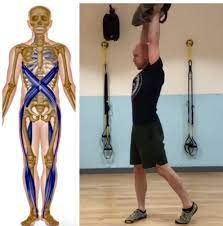What The Research REALLY Says Helps Shoulder Pain
2024-01-7
Jessica Bento, Physical Therapist (Creator DVRT Restoration Certification, DVRT Rx Shoulder, Knees, Pelvic Control, & Gait Courses)

I get A LOT of people on social media asking me to help them with their shoulder pain. Truly it does make me sad that so many people are in pain and most people don’t realize how problematic shoulder pain actually is in our society. In fact, a 2022 review of shoulder pain worldwide stated, “Our review demonstrates that a significant proportion of the population across the world will experience shoulder pain daily, yearly, and throughout a lifetime.” That isn’t great news is it!
For me though, a bigger issue than people having shoulder pain is the fact so many people have an issue recovering from their injury. A 2021 paper in Current Treatment Options In Rheumatology, ” In 2011, a Delphi exercise took place to achieve consensus about the most important prognostic factors which would predict persistent shoulder pain (less than 50% improved) 3 months after presenting in primary care.” If you don’t know, those aren’t great stats for improving shoulder pain, especially chronic with all the ways we typically approach addressing such issues.

That’s why we have to start realizing (which the research keeps telling us) we have to think about shoulder pain differently and what we do to improve shoulder function and strength. As the researchers share…
“Six studies were described by the authors as high-quality and three as low-quality according to their methodological quality assessment. They found convincing evidence that there was no prognostic association with shoulder physical examination findings, including whether or not range of motion was restricted; degree of restriction of motion; muscle strength; or baseline diagnosis of a large rotator cuff tear….Likewise, treatments including physiotherapy and medication prescribed in primary care were also not shown to affect prognosis. In fact, the factors which best predicted poor prognosis were longer pain duration, higher pain intensity, co-existing neck pain, greater disability, and previous shoulder pain”

The same paper explains…
“Some further insight can be gleaned from investigations of pain sensitivity amongst people with shoulder pain. In a group of adults aged 18–85 years awaiting arthroscopic shoulder surgery with unilateral shoulder pain who did not report pain > 3 months at any other anatomical site, and a group of healthy controls without shoulder pain, features of both peripheral and central pain sensitisation in relation to painful stimuli including pressure pain and thermal sensitivity were demonstrated [52]. Interestingly, some shoulder pain subjects demonstrated peripheral and central pain sensitisation whilst in others, the pattern was more central or more peripheral and the authors could not “explain” these variable patterns with any data that they had collected. Their findings were consistent with those seen in other unilateral musculoskeletal conditions, and the authors suggested that the standard treatment approaches for shoulder pain that focus on the peripheral stimulus (steroid injections, physiotherapy) would have limited effectiveness for the management of people with central sensitisation patterns.”
What does this mean? At a very base level, strength and even mobility may not have the big impact on improving shoulder pain that many are led to believe. That our brains actually change with chronic pain (something if you have followed with our posts about chronic low back pain we have discussed. I share this because people get REALLY invested in believing there is an exercise, training method, or really simple answers to complex issues like shoulder pain. Don’t get me wrong, often we can improve someone’s shoulder mobility and even strength quickly, but chronic pain can be a lot more challenging.
Such profound scientific evidence is ONE big reason we have made our Myofascial Integrated Movement (MIM) program much more of a point of emphasis in 2024. In fact, a 2022 study on mind-body practices and shoulder pain found, ” The pain intensity was significantly reduced, while flexion and abduction were significantly improved, in the experimental group compared to the control group, after the intervention. In addition, the change of flexion negatively correlated with the change of pain intensity in the experimental group, but not in the control group. These results show that a short-term application of mind-body intervention significantly alleviates shoulder pain and improves shoulder movement, suggesting its potential use as a therapy for people with shoulder pain.”
So, what does that look like? Here is an example of a series that you can start to employ. You can learn more with our interview with Coach Cory Cripe HERE
This will be a big part of our 6-Week Online Shoulder Masterclass you can still sign-up HERE.
If you want to see MIM in more action, we hope you will join us for our upcoming masterclass and check out our MIM program HERE
© 2025 Ultimate Sandbag Training. Site by Jennifer Web Design.







